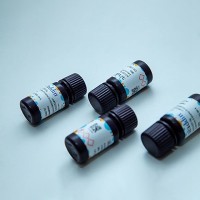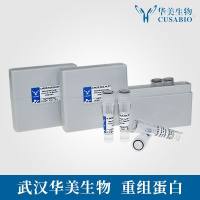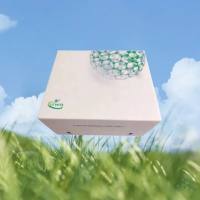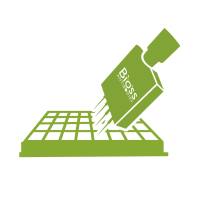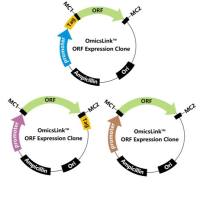Overview of the Physical State of Proteins within Cells
互联网
- Abstract
- Table of Contents
- Figures
- Literature Cited
Abstract
To understand how proteins work it is necessary to understand their physical state within the cell. This unit reviews the classification of proteins, how that is related to the hydropathicity of the protein, other factors that affect the heterogeneity of proteins, protein assemblies, methods for altering the solubility of proteins, and limitations of in vitro manipulations of proteins.
Table of Contents
- Protein Classifications
- Hydropathy Patterns Often Reflect a Protein's Classification
- Membrane Proteins
- Additional Factors Affecting the Physical Heterogeneity of Proteins
- Protein Assemblies
- Altering the Solubility of Proteins: Protein Extraction
- Limitations of the In Vitro Manipulation of Proteins
- Conclusions
- Figures
- Tables
Materials
Figures
-
Figure 1.5.1 General classifications of proteins. In these schematic representations of globular, fibrous, and transmembrane proteins, hydrophobic regions are shaded. Note that the disposition of hydrophobic residues often reflects the protein class. View Image -
Figure 1.5.2 Membrane proteins containing hydrophobic anchors. A nontransmembrane or monotopic membrane protein is anchored to the membrane via a hydrophobic amino acid sequence. Transmembrane proteins are classified as types I, II, III, and IV (Table ). The first transmembrane segment of a multispanning membrane protein can be inserted as in type I, II, or III proteins. This segment functions as a start‐transfer peptide. Subsequent transmembrane segments will function as stop‐transfer and start‐transfer sequences, resulting in a multispanning membrane topology. View Image -
Figure 1.5.3 Membrane proteins containing lipid moieties. In the simplest case, fatty acids can be covalently attached to transmembrane proteins. Hydrophobic tails are also attached to proteins to form isoprenoid‐linked proteins. A third class of lipid‐attached proteins are the GPI‐linked proteins. Hydrophobic regions are shaded. View Image
Videos
Literature Cited
| Literature Cited | |
| Andrews, D.W. and Johnson, A.E. 1996. The translocon:More than a hole in the ER membrane? Trends Biochem. Sci. 21:365‐369. | |
| Ausubel, F.M., Brent, R., Kingston, R.E., Moore, D.D., Seidman, J.G., Smith, J.A., and Struhl, K.(eds.) 1998. Current Protocols in Molecular Biology. John Wiley & Sons, New York. | |
| Cardoso de Almeida, M.L. 1992. GPI Membrane Anchors. Academic Press, New York. | |
| Englund, P.T. 1993. The structure and biosynthesis of glycosyl phosphatidylinositol protein anchors. Annu. Rev. Biochem. 62:121‐138. | |
| Freedman, R.B. and Hawkins, H.C. 1980. The Enzymology of Post‐Translational Modifications of Proteins,Vol. 1. Academic Press, New York. | |
| Freedman, R.B. and Hawkins, H.C. 1985. The Enzymology of Post‐Translational Modifications of Proteins,Vol. 2. Academic Press, New York. | |
| Hoppe‐Seyler, F. 1864. Über die chemischen und optischen Eigenschaften des Blutfarbstoffs. Virchows Arch. 29:233‐235. | |
| Hubbard, S.R., Wei, L., Ellis, L., and Hendrickson, W.A. 1994. Crystal structure of the tyrosine kinase domain of the human insulin receptor. Nature. 372:746‐754. | |
| Kühn, W. 1876. Über das Verhalten verschiedner organisirter und sogenannter ungeformter Fermete. Über das Trypsin (Enzym des Pankreas) [Reprint, FEBS Lett. 62:E3‐E7 (1976).] | |
| Kyte, J. and Doolittle, R.F. 1982. A simple method for displaying the hydrophobic character of a protein. J. Mol. Biol. 157:105‐132. | |
| Parry, D.A.D. 1987. Fibrous protein structure and sequence analysis. In Fibrous Protein Structure (J.M. Squire and P.J. Vibert eds.) pp. 141‐171. Academic Press, New York. | |
| Petty, H.R. 1993. Molecular Biology of Membranes:Structure and Function. Plenum,New York. | |
| Petty, H.R., Worth, R.G., and Todd, R.F. III. 2002. Interactions of integrins with their partner proteins in leukocyte membranes. Immunol. Res. 25:75‐95. | |
| Racker, E. 1985. Reconstitutions of Transporters, Receptors, and Pathological States. Academic Press, New York. | |
| Rietveld, A. and Simons, K. 1998. The differential miscibility of lipids as the basis for the formation of functional membrane rafts. Biochim. Biophys. Acta. 1376:467‐479. | |
| Schlesinger, M.J., Magee, A.I., and Schmidt, M.F.G. 1980. Fatty acylation of proteins in cultured cells. J. Biol. Chem. 255:10021‐10024. | |
| Schultz, G.E. and Schirmer, R.M. 1979. Principles of Protein Structure. Springer‐Verlag, New York. | |
| Spiess, M. 1995. Heads or tails—what determines the orientation of proteins in the membrane. FEBS Lett. 369:76‐79. | |
| Squire, J.M. and Vibert, P.J.(eds.) 1987. Fibrous Protein Structure. Academic Press, New York. | |
| von Heijne, G. and Gavel, Y. 1988. Topogenic signals in integral membrane proteins. Eur. J. Biochem. 174:671‐678. | |
| Zhang, F.L. and Casey, P.J. 1996. Protein prenylation:Molecular mechanisms and functional consequences. Annu. Rev. Biochem. 65:241‐269. | |
| Key References | |
| Racker, 1985. See above. | |
| A wonderful little book on membrane protein manipulation which disproves the hypothesis that scientists can't write. | |
| Tanford, C. 1961. Physical Chemistry of Macromolecules. Academic Press, New York. | |
| A rigorous introduction to the physical properties of proteins, which remains useful several decades later. | |
| Tanford, C. 1980. The Hydrophobic Effect. John Wiley & Sons, New York. | |
| A very readable introduction to the hydrophobic effect. | |
| Internet Resources | |
| http://www.expasy.ch | |
| A user‐friendly protein database including two‐dimensional PAGE data and 3D protein structures. | |
| ftp://ftp.pdb.bnl.gov/ | |
| Contains protein crystallography data. | |
| http://www.ncbi.nlm.nih.gov | |
| An important protein database. |


